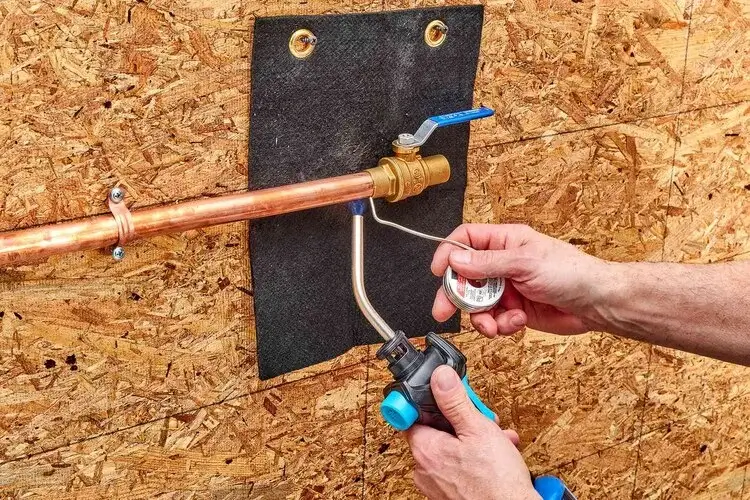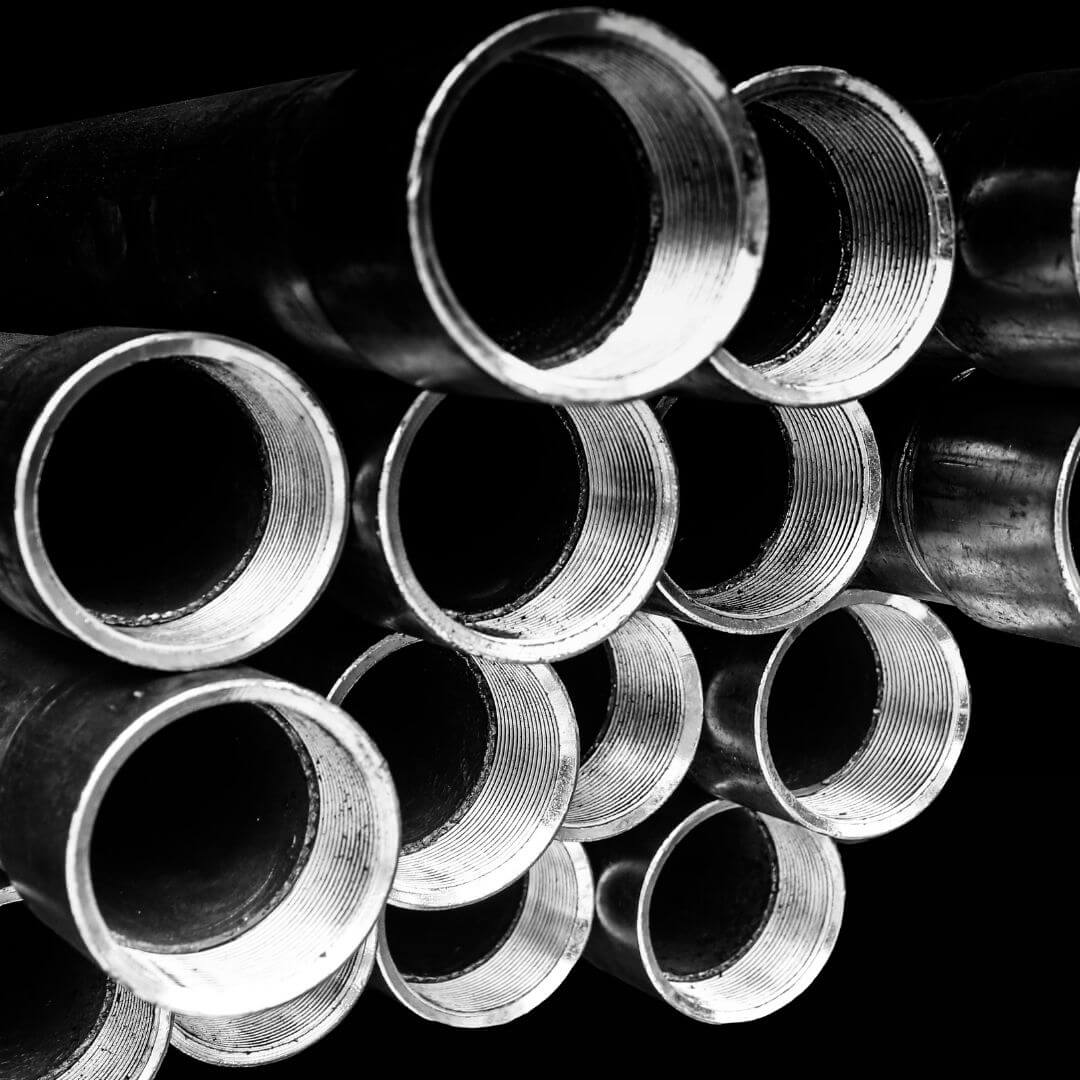Copper vs plastic pipes – which one should you use for home plumbing?
Likewise, we will understand which piping system is easier to install, more durable, and a better fit for our budget.
They may be hidden in the walls and under the ground, yet plumbing pipes are an essential part of our daily lives. Without a proper plumbing system, we will not have drinking water in the comfort of our own homes.
But how can we be sure that the water we receive is the best quality?
While we can not control the water quality from the source it comes from, we can do something about the way we receive it. This is where plumbing comes in.
By understanding our plumbing systems, we can install the safest plumbing materials for water transportation.
Copper vs Plastic Pipes – How Do They Differ?

When renovating or building a new home, contractors will sometimes debate copper or plastic pipe for water. The truth is that both of these materials have their advantages and disadvantages.
Sometimes, depending on their usage, they are best used for different situations. Nonetheless, it is best to understand the differences to make an informative decision when it comes to laying down plumbing pipes.
- Plastic Piping
Plastic piping was initially invented in pre-war Germany, and many installations done back then are still in use today. Business owners of the 50s and 60s were amazed by the longevity and durability of this new form of water transportation.
Thus plastic piping, a cheaper alternative to copper piping, was embraced.
Besides lower cost and longevity, plastic pipes offer other benefits as well. They are easy to lay down and connect.
This is because plastic is more flexible and does not require the use of a naked flame during installation. Once installed, they provide quieter water transportation, even at high pressure and water speeds.
For significant construction works, plastic is more versatile due to lower labor costs.
Besides low cost, plastic can last for more than fifty years since it does not rust. Furthermore, plastic pipes can expand eight times their size before freezing.
Plastic piping has some disadvantages as well.
For instance, these pipes are not flexible at the joint and can not fit into tight spaces like copper. Plastic plumbing is also at risk of being ruined and chewed by rodents such as mice or rats.
Another disadvantage of plastic piping is the possible health risks.
Unfortunately, it has been discovered that older plastic pipes leach chemical compounds into the water. These chemicals continue to release volatile organic compounds, which are assimilable organic carbon. This carbon can lead to bacterial growth and other contaminants. [1]
Eventually, this can all cause deterioration in the quality of drinking water. However, the risk of your drinking water being contaminated through plastic pipes will depend on the age of your system.
When we talk about plastic pipes, we must keep in mind that there are different types of plastics. The two most common plastics used for plumbing are Cross-linked polyethylene (PEX) and Polyvinyl chloride (PVC).
Related: PEX vs Polybutylene
- PEX
This is a flexible plastic piping that is popular in residential and small business applications. PEX has a slightly higher cost than PVC, but it requires minimal maintenance. It is one of the best pipes for water distribution inside a building that offers a fast installation.
The great thing about PEX is that it is leak-free, which is a significant advantage over copper piping. However, it cannot be used in outdoor applications because UV rays can damage its outdoor plastic layer.
Related: PEX A vs PEX B
- PVC
PVC pipes are very versatile when it comes to plumbing. They can be used for cold and hot potable water and sewage applications. The thickness and configuration of these pipes vary depending on where they will be used.
Pressure water pipes made from PVC, for instance, are not the same as sewer pipes. If you are using PVC pipes for potable water application, they need to be “NSF-PW” or “NSF-61,” which indicates that they comply with health effects requirements.
Related: How Long Do PVC Pipes Last
- Copper Piping
Since ancient times copper pipes have been in use, and even today, they are a good substitute for plastic piping. Many older homes still have copper piping to this day.
Because these pipes are well-known, contractors sometimes prefer copper over other unknown materials.
Copper has an extensive duration, is highly reliable, and is recyclable!
It is a strong, flexible, naturally occurring metal that can be molded into long thin pipework. Their joint flexibility minimizes vibration damage as well.
Other benefits of copper pipes include corrosion resistance and easy maintenance. These pipes can be used for hot and cold water plumbing and can fit into tighter spaces.
Related: Soldering Copper Pipes Problems
Installation of copper piping is a bit more complicated and time-consuming. Copper pipes need to be soldered together, and they might require additional fittings. Therefore a plumber is necessary when installing copper pipes to ensure no leaks occur.
Unlike plastic pipes for water, copper is antimicrobial, which means it will not have the same risk as plastic pipes. [2]
However, copper pipes can leach copper into the water directly from the pipe. The leaching of copper into the water will depend on various factors. Factors include the types and amount of minerals present in the water, the duration the water stays in the pipe, the water acidity, and the water temperature.
Too much copper in our bodies can make us sick. Symptoms of copper poisoning include nausea, live diseases, kidney failure, and other ailments. Corrosion can also take place if the water running through is acidic.
Nonetheless, copper leaching and corrosion of such pipes are controlled by EPA and inhibitors like fluoride. Because copper pipes reduce the amount of lead in water to around 0.25 percent, these pipes are also safer.
Copper vs Plastic Pipes – Which is Safer?

As explained before, both copper and plastic pipes can leach certain components into the water when used.
Chemicals that are leached from plastic pipes will give the water a plastic taste. However, this plastic taste tends to disappear after a couple of months of use. Therefore, the health risks come from systems installed before 1977. So, despite the taste, there is no real health risk from plastic pipes nowadays. [3]
Since copper can corrode in acidic water, some health risks such as Alzheimer’s might be of concern where large amounts of copper are consumed. Nevertheless, the human body can expel copper relatively quickly.
Luckily, since small quantities of copper are perfectly safe, the health risk from copper piping is minimal.
Overall, the primary source of contamination in water would be brown water. If a piping system has cracks or gaps in the joints, it can cause brown water to leak into clean water.
Each of these materials has its use and therefore is better in different situations. For instance, for high-traffic areas, PVC pipes that are corrosion resistant and impact-damaged resistant are a better option. Copper pipes with a smaller diameter, on the other hand, would be a more suitable piping solution for tighter spaces.
When it comes to the performance of copper vs plastic pipes, both of the materials are similar.
In most cases, the defining factors will be the price and appearance. While plastic is much cheaper, copper provides a more professional look that will last a lifetime.
Other Materials Used For Plumbing Pipes

One can find various plumbing pipe materials for residential and commercial buildings. PVC plastic, PEX, and copper will be used depending on their application and the location in which they are installed.
Other plumbing pipes include stainless steel, cast iron, black galvanized, and brass. Here of a quick overview of the different types of piping on the market for plumbing.
Stainless Steel
This type of piping usually looks very neat, but it can be expensive.
Stainless steel pipes are best used in areas that are subject to corrosion and near coastal areas. They come in various sizes and lengths and can be flexible and rigid. Couplings are required for attachment to other types of pipes.
Galvanized
There was a time that galvanized piping was used as the standard for residential projects. However, because rust can build up inside small diameters, this kind of piping became less popular.
In older plumbing systems that consist of galvanized pipes, rust traces can be seen in the water coming from the faucet. Therefore galvanized piping is best used to transport greywater or non-potable water.
Related: Replacing Galvanized Pipes With PEX
Brass
If brass plumbing pipes are made of 67% to 85% copper, they provide excellent rust resistance. Red brass pipes are the best brass pipe grade and are obtained when the alloy contains 85%.
Furthermore, brass pipes are a long-lasting material that does not rust in the interior. You also won’t find friction losses inside the brass pipes. Compared to steel, plumbing brass pipes are more accessible to thread.
Brass pipes are also excellent for hot-water and extensive distribution systems. Therefore they are ideal for pump fittings, water tanks, and wells. They come in 12-foot straight lengths and can last longer than other plumbing materials.
Cast Iron Piping
Cast iron plumbing pipes can come in the form of bell-and-spigot type or threaded joints. Compared to other pipes, cast iron is heavier and therefore used for water distribution systems and underground installation.
The main pipe on drainage or sewer systems typically contains cast iron piping.
These pipes can be very heavy and need support while assembling a joint. The smallest size one can find 4″, which is large enough to be used on residential applications.
Related: How Long Do Cast Iron Pipes Last
Wrap Up
It is fair to say that not one plumbing pipe is a hundred percent perfect. But if you are considering plastic, you might be wondering, “is plastic plumbing as good as copper?”
The answer is that they are good in a different way. Plastic pipes are certainly less expensive, easy to install, and very versatile. Plastic pipes are a great choice for a DIY-project! However, if you think about it, copper has been in use for many years. If properly installed, copper pipes will not give you problems well beyond your lifetime.
You will have to consider your exact criteria before making a choice. For instance, you might have an area in your home that only a flexible plastic pipe can reach or space where only a thin copper pipe will fit. Additionally, you will have to consider the costs as well.
Copper might be the best overall when it comes to durability, but it might just not be the perfect choice for your specific situation. The best is to talk to a professional plumber to make sure you choose the best piping material for your exact building conditions.

Michael Davis is a heating & plumbing expert who currently works as independent contractor in SC. He also writes for Plumbertip.
For almost 10 years he worked on various plumbing tasks across South Carolina.



